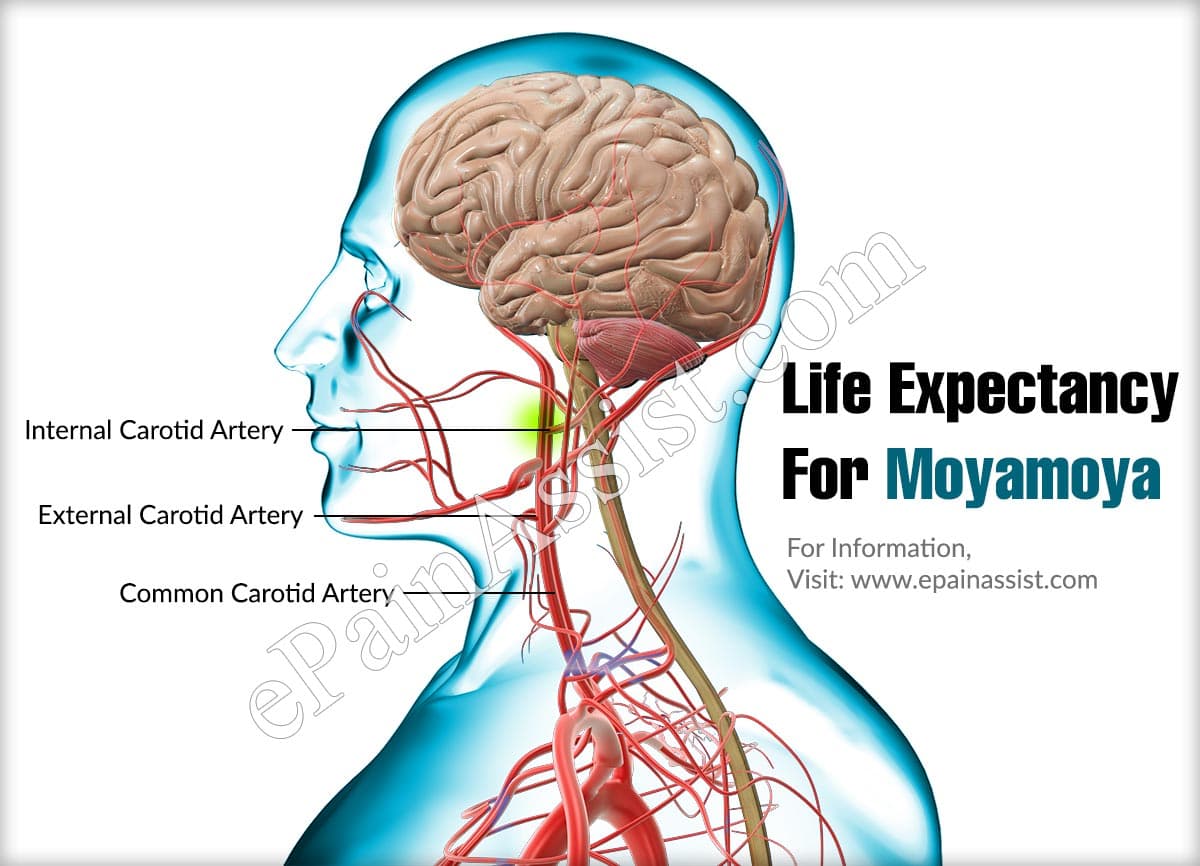Moyamoya is a rare, progressive cerebrovascular disorder in which there is occlusion or stenosis of blood vessels in the brain. The blood vessels most commonly affected are the circle of Willis and the arteries associated with it. The occlusion and/or stenosis of cerebrovascular blood vessels lead to reduced blood supply to the parts of the brain distal to stenosis. This leads to development of abnormal blood vessels adjacent to the stenosis in an attempt to supply blood to the portion of brain deficient in it. These abnormal collateral blood vessels resemble “puff of smoke” in a cerebral angiogram. As this disease was first described by Japanese team, it is coined as moyamoya, which means “puff of smoke” in Japanese.

Life Expectancy For Moyamoya
Moyamoya is a rare and progressive disease. It needs medical management as without treatment the disease will definitely progress presenting as strokes or seizures and progressive cognitive impairment, leading to gradual vision loss, difficulty speaking, and weakness of arms and legs. The cognitive impairment is basically due to repeated attacks of stroke. The quality of life is invariably affected. Death in moyamoya is mostly due to hemorrhage. Since, hemorrhage is more common in adults; mortality is higher in adults (approximately 10%) than in children (approximately 4.3%).
Moyamoya is usually diagnosed after an individual presents with transient ischemic attack or stroke. Surgical procedure can re-establish blood supply to the part of brain receiving reduced blood supply. Although, untreated moyamoya can have severe long lasting implications and may even reduce life expectancy, surgical management has very good long-term outcome. People with surgical management can live just like any other individual without moyamoya.
Surgeries help in preventing further strokes both in children and adults. Stroke prevention means improved quality of life and improved life expectancy. Although, there have been no publishable data and statistical analysis regarding life expectancy of a person with moyamoya disease, this could be due to its rarity and varying nature of the disease and association with other diseases, making it difficult for predicting the expectancy of life as each case is different and the cases are so rare, the clinical study and collection of data being a difficult task.
What is important is post-operative care. Aspirin is usually prescribed lifelong to prevent the chances of blood clots and strokes. Moyamoya disease has minimal lifestyle modification. Apart from prevention of birth control pills in females, avoiding blood donation, staying hydrated, blood pressure management, no particular modification is necessary. However, long term follow up with health care professional to monitor the condition via MRI, angiogram, blood flow studies, and neurological testing, following surgery is required.
Causes Of Moyamoya
Generally, the cause of moyamoya is idiopathic. It has been known to have genetic predilection in about 10% cases. It is also associated with several other conditions, including, Graves disease, tuberculosis, leptospirosis, sickle cell anemia, aplastic anemia, lupus anticoagulant, Fanconi anemia, Down syndrome, Turner syndrome, Apert syndrome, Neurofibromatosis type 1, hypertension, atherosclerotic diseases, radiation injury, cranial trauma. Due to its association with other diseases, it is also referred to as moyamoya syndrome.
Symptoms Of Moyamoya
Although, earlier it was thought to affect only people from Asia, especially, Japan, it is now prevalent all over the world. Although, it can affect adults, it is more common in children as young as 6 months old. Females are more commonly affected than males.
Clinical course for children and adults may vary. As there is reduced blood supply to part of brain affected by it, children present with symptoms of cerebral ischemia, while adults mostly present with symptoms of hemorrhage of the collateral vessels.
The symptoms may include transient ischemic attack, seizures, headache, weakness or paresthesias of extremities, incoherent speech, visual abnormalities, and problems balancing. A recent meta-analysis showed that approximately 30% of children with moyamoya have cognitive impairment, suggestive of chronic reduced blood supply to part of brain.
Also Read:
